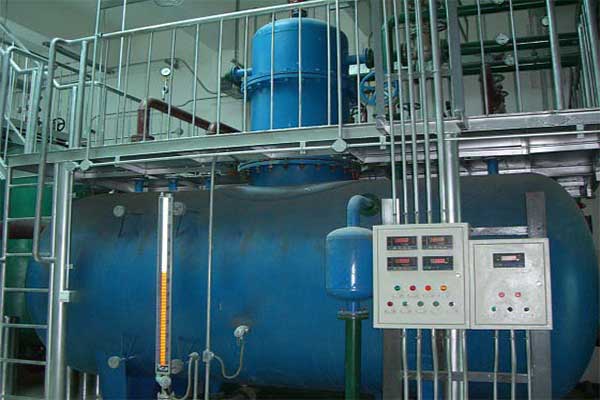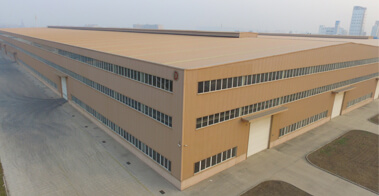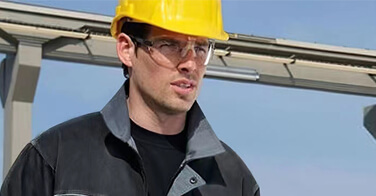The high-level thermal deaerator has been the most widely used deaeration equipment domestically and internationally for many years, but it has serious drawbacks. The installation height of 7-14m for the high-level deaerator results in large civil engineering investment, difficult lifting, and long construction periods. Currently, as urban fuel and gas boilers rapidly replace coal-fired boilers, the high-level layout of deaerators needs to be changed to low-level. In addition, the high-temperature condensate and secondary steam are all closed-loop recovered by the condensate water recovery system, and the original high-level deaerator (generally 104°C) cannot adapt to the actual needs of high-temperature water closed-loop entering the boiler.
The innovative low-level medium and low-pressure thermal deaerator solves the above-mentioned shortcomings and the world's difficult problem of pump cavitation, extending the service life of the pump. It can be installed on the ground or underground with zero height placement, greatly reducing civil engineering costs and improving construction efficiency. At the same time, this equipment can adapt to the actual needs of high-temperature water closed-loop entering the boiler, which is more in line with the requirements of modern urban fuel and gas boilers. Therefore, the low-level medium and low-pressure thermal deaerator has great potential in solving the shortcomings of high-level deaerators and has good application prospects.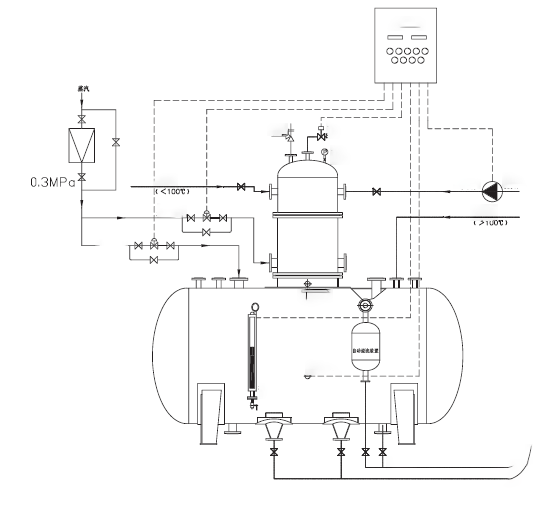
Working Principle:
According to Henry's law and Dalton's law, when water is heated to saturation under constant pressure, the partial pressure of oxygen tends towards zero and all the dissolved gases in the water escape and are removed.
A low-pressure vortex-type thermal oxygen removal device has four stages of oxygen removal equipment:
The first stage involves water entering the deaeration tower under pressure and forming multiple layers of centrifugal vortex membranes. These membranes exchange heat with the rising steam through several "conical water film skirts" effectively removing most of the oxygen.
The second stage involves a rake group, where the water that comes down from the vortex tube is broken up and a new film is formed for secondary heating and oxygen removal.
The third stage uses a grid and a wave-filled layer for deep oxygen removal. Even when the inlet conditions are poor (i.e. low water temperature, high oxygen content, large water volume fluctuations), the oxygen removal device can still operate normally.
The fourth stage involves secondary heating in the water tank. When the deoxygenated water entering the water tank has not reached the set deoxygenation temperature, the system automatically activates steam-assisted heating for automatic oxygen removal.
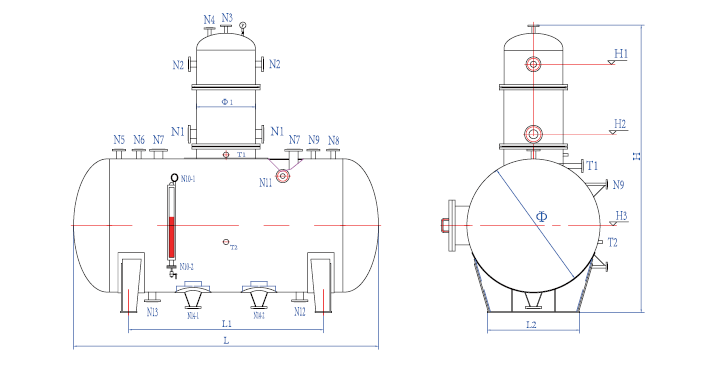
Characteristics:
-
Low-level layout, cost-saving investment
-
Reliable boost anti-cavitation technology is used to directly increase the static pressure of the feed water, ensuring that the feed water pump does not cavitate. There is no need for feed water gravity potential, and it can be arranged at zero or even negative height, which is especially suitable for the system matching of fuel-fired boilers. It saves infrastructure costs, integrates machinery and electronics, and is easy to install and maintain.
-
Medium pressure
-
Based on the principle of multi-stage water seal, a self-controlled overflow device is invented to replace the previous water seal composed of three steel pipes, solving the problem of water seal failure due to high pressure and forming a closed medium pressure deaeration system. At the same time, medium pressure can also be beneficial for water condensation to produce secondary steam or new steam to apply pressure to the water surface, ensuring the positive pressure water head necessary for pump anti-cavitation. At this time, deaeration almost does not require self-consuming steam, equivalent to increasing the boiler output by 3%-4%.
-
Low steam consumption, high deaeration rate
-
The exhaust pipe of the high-level thermal deaerator in the past was open, and the cutoff valve was always open. The oxygen discharged accounted for less than 1% of the total exhaust gas, resulting in a large waste of new steam and thermal pollution, and the energy utilization rate was too low. The exhaust pipe of the low-level thermal deaerator is equipped with an electric valve, which can discharge oxygen according to a specific time and quantity, achieving a high standard of deaeration effect and reducing new steam waste by 60%-80%.
-
Perfect automatic control system
-
Equipped with a perfect automatic control system, the equipment operates more reasonably and reliably, and can automatically adjust the operating state of the deaerator to ensure the deaeration effect.
-
Reboiling device
-
The improved reboiling device can quickly heat up when the deaerator restarts, so that all the residual oxygen in the water is discharged, and the operation is safe and reliable.
-
Fully consider condensate water recovery
-
Condensate water at various temperatures is directly used for boiler feed water or for heating and deaeration of makeup water, saving deaerator steam consumption. If it is used in conjunction with the closed condensate water recovery system developed by our company, the effect will be better and the system will be more stable.


